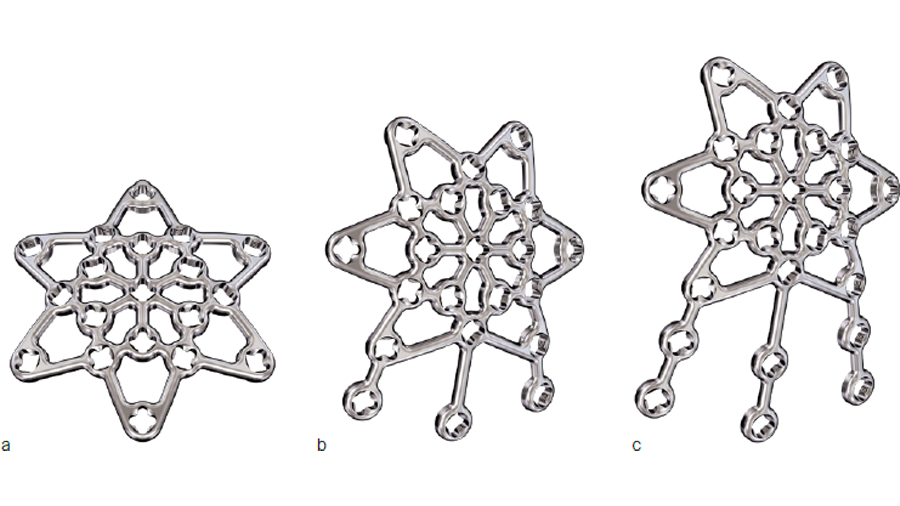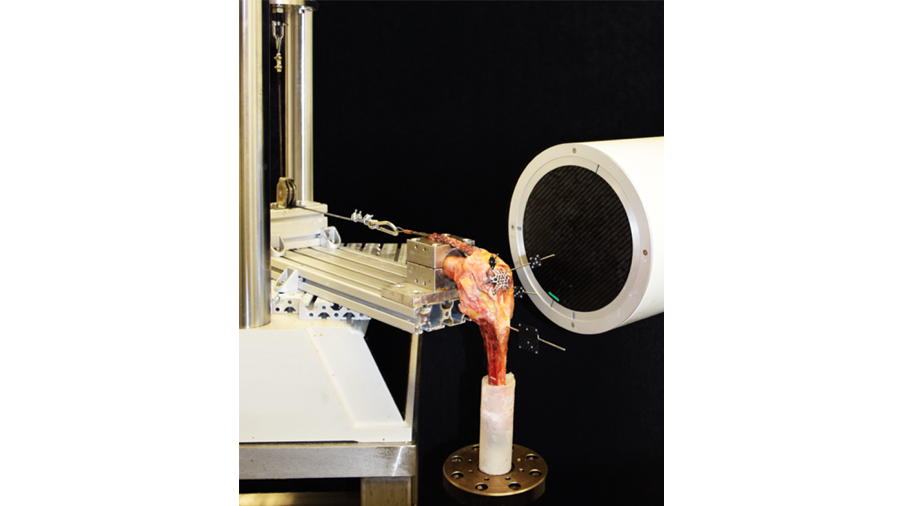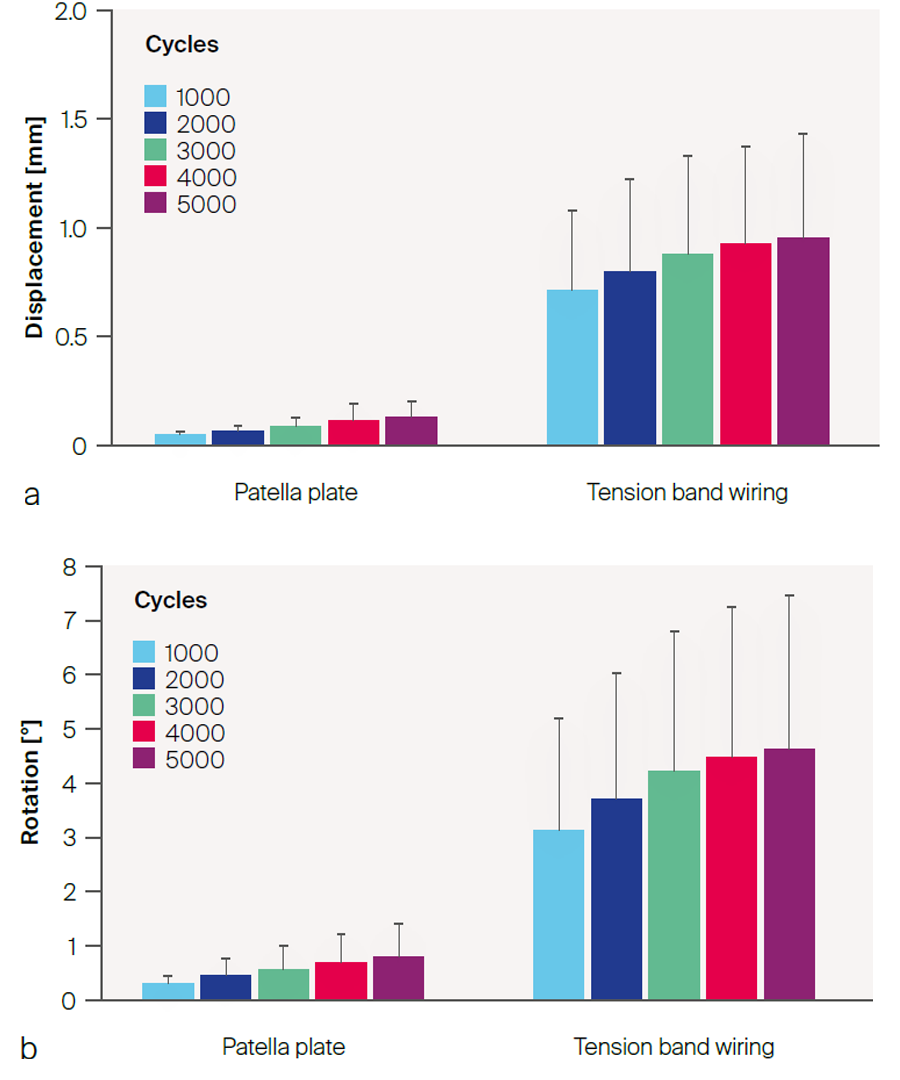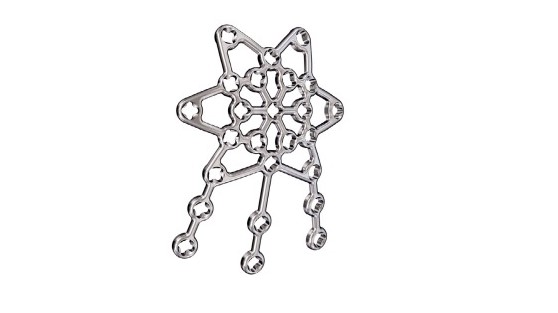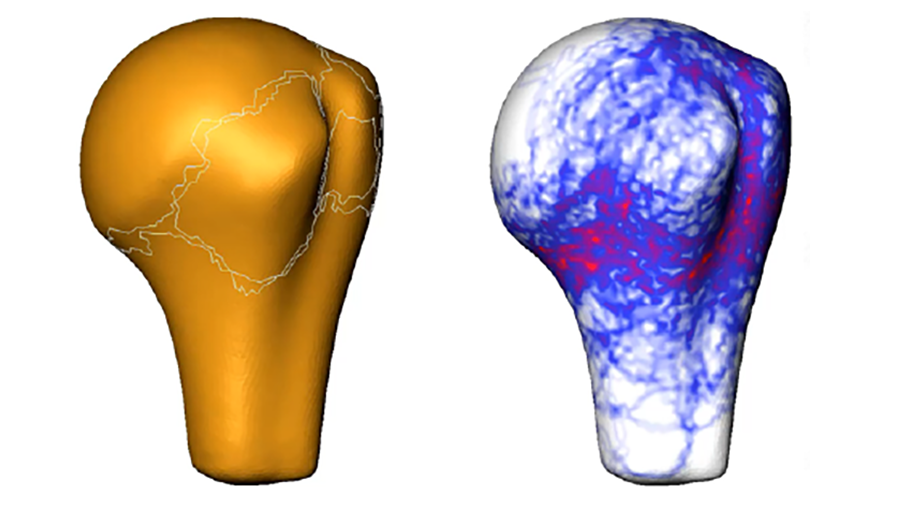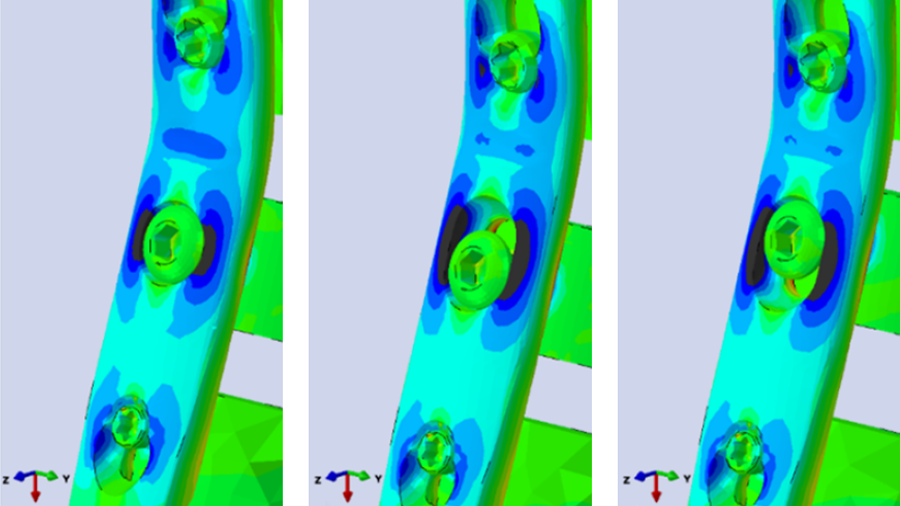
Anterior variable angle locked plating vs tension band wiring of simple and complex patella fractures—a biomechanical investigation
Introduction
Treatment of both simple and complex patella fractures represents a challenging clinical problem. It aims to restore the integrity of the extensor mechanism and the congruity of patellofemoral joint. Controversy exists regarding the most appropriate fixation method. Tension band wiring, aiming to convert the pulling forces on the anterior aspect of the patella into compression forces across the fracture site, is the standard of care; however, it is associated with high complication rates.
Recently, anterior variable angle locking plates have been developed for treatment of both simple and comminuted patella fractures (Fig 1).
The aim of this project was to investigate the biomechanical performance of the recently developed anterior variable angle locking plates vs tension band wiring used for fixation of simple and complex patella fractures.
Materials and Methods
Sixteen pairs of human anatomical knee specimens were used to simulate either two-part transverse simple AO/OTA 34-C1 or five-part complex AO/OTA 34-C3 patella fractures by means of osteotomies, with each fracture model being created in eight pairs. The complex fracture pattern was characterized with a medial and a lateral proximal fragment, together with an inferomedial, an inferolateral, and an inferior fragment mimicking comminution around the distal patellar pole. The specimens with simple fractures were pairwise assigned for fixation with either tension band wiring through two parallel cannulated screws, or an anterior variable angle locking core plate. The knees with complex fractures were pairwise treated with either tension band wiring through two parallel cannulated screws plus circumferential cerclage wiring, or an anterior variable angle locking three-hole plate. Each specimen was tested over 5000 cycles by pulling on the quadriceps tendon, simulating active knee extension and passive knee flexion within the range from 90° flexion to full knee extension. Interfragmentary movements were captured by means of motion tracking (Fig 2).
Results
For both fracture types, the articular displacements, measured between the proximal and distal fragments at the central aspect of the patella between 1000 and 5000 cycles, together with the relative rotations of these fragments around the mediolateral axis were all significantly smaller following the anterior variable angle locked plating compared with the tension band wiring, P < .01 (Fig 3).
Conclusion
From a biomechanical perspective, anterior locked plating of both simple and complex patella fractures provides superior construct stability vs tension band wiring.
You might also be interested in
The new Variable Angle Locking Patella Plating System
The Variable Angle Locking Patella Plating System was developed to reduce complication rates.
Statistical analysis of humeral fractures
Allows identification of zones with highest fracture probability.
Helical plating
Provides well-balanced load sharing in laterally plated femoral defect fractures.
Pancarpal arthrodesis in canine
Although oval radiocarpal holes provide more options, they increase predicted failure risk.

